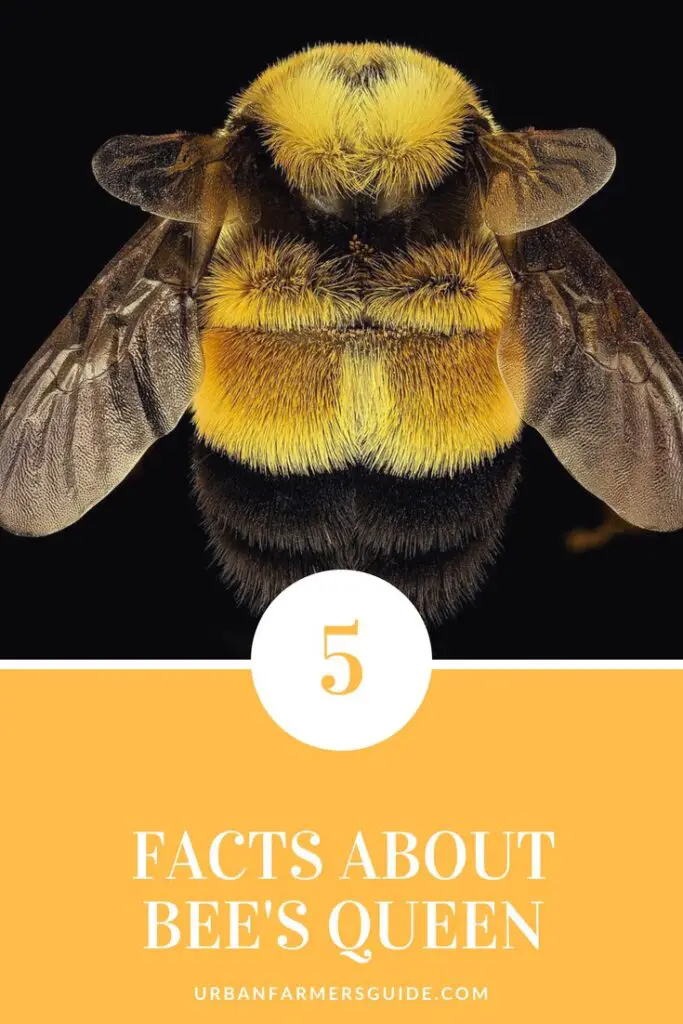The survival of a colony of bees living in a beehive depends on the queen bee. Without a queen bee, the hive will eventually die.
The hives queen is the only female bee in the hive that has fully developed reproductive organs.
The queen is not in control of the hive. Her soul’s purpose is to lay eggs that will develop into bees that will fill other roles in the hive.
The Queen Bee?
The Queen Bee is a supreme ruler of the beehive. She is the only bee that can lay eggs and is the largest in the colony. The Queen Bee is fed royal jelly her entire life, which makes her live much longer than the average bee.
The Queen Bee is vital to the survival of the hive. Without her, the colony would not be able to reproduce and would eventually die out.
The average life span of the queen bee is two to three years.
Find more tips about the Best 5 DIY Beekeeping Starter Kit & Tools – Review and The Guide to Beekeeping Equipment Names and Pictures.
What Queen Bee eats ?
Queen Bee eats honey. But, why Queen eats honey ?
Queen Bee eats honey because it is full of nutrients that help the bee stay healthy and strong. Honey also provides the queen with energy, which she needs to lead the hive and lay eggs.
How to obtain queen bee ?
There is no one definitive answer to this question, as there are a variety of ways to obtain a queen bee. One method is to purchase a queen bee from a beekeeping supplier.
Another option is to capture a wild bee’s queen, or to allow a colony of bees to produce their own queen.
From a Bee to a Queen
When the Bee turn into a Bee’s Queen ?
The queen is determined when the bee is still in its larval stage.
The larval that has been set aside as potential queens are fed extra royal jelly. Royal jelly is a secretion that the worker bees store in their heads.
Larvae that the hive feels will make potential queens are also kept in Queen cells.
Queen cells differ from cells used in the rest of the hive because they are larger and are designed vertically instead of vertically, the queen hangs, head down, during her development.
Potential queen larvae must be determined within four days of the time the larvae is laid.

The Queen Bee Communication
When it is time for the queen to leave her cell, she chews through the cap. As she chews she emits a sound that is believed to warn other hatching queens of her arrival.
Music aficionados will recognize the sound as a G sharp. It is not unusual to find that after the first queen has hatched that the rest of the queen cells have a slit in them where the young queen has chewed through, effectively killing the developing larvae inside the cells.
Read also Ultime Guide to Queen Excluder: Use, Pros & Cons, How to Use and Top 5.
The Virgin Queens Bees
Beekeepers call the destroyed larvae, virgin queens. Worker bees will try to keep several young queens alive at a time in order to have a backup Queen available if the first queen is unable to find a mate or does not survive her nuptial flight.
The Old Queen Bee Nuptial Flight
When the new queen is old enough to fly she leaves the hive. While she is away from the hive she must find several drone bees from a different hive to mate with.
It is important that the queen mates with at least twelve drones during this nuptial flight. The sperm that she collects during this flight will be the sperm that she uses for the rest of her life.
If the queen is unable to make the nuptial flight the survival of the rest of the hive is in peril. Most hives try to keep several virgin queens alive to help prevent that from happening.
Most hives allow the old queen to continue to lay eggs, however, when it is time for the rest of the hive to swarm, she leaves the hive.
Once they have mated with a queen the drone bees die.
How to identify the Queen Bee ?
It is normally easy to see which bee is the queen when she is surrounded by other bees. She has an abdomen that is considerably longer than her fellow hive mates.
The Bee’s queen can be identified by her large size and her long abdomen.
To make identifying the queen faster many beekeepers mark their queen with a tiny bit of paint.
Continue Reading on Bees here.
Queen Bee : Q&A
1. When does the queen bee lay eggs?
The queen lays eggs constantly throughout her lifetime.
2. How many eggs does the queen bee lay in a day?
The queen can lay up to 2,000 eggs in a single day.
3. How long does the queen live?
The queen can live up to five years.
4. What is the queen bee’s role in the hive?
The queen is the primary reproductive member of the hive and is responsible for laying eggs.
5. Can a bee’s queen sting you?
Yes, a queen can sting you.
6. Why are bees’s queen so special?
Bees’ Queen are so special because they are the only bees in a colony that can lay eggs.
7. How a bee becomes queen?
A bee becomes queen when she is the first bee to hatch from a fertilized egg.